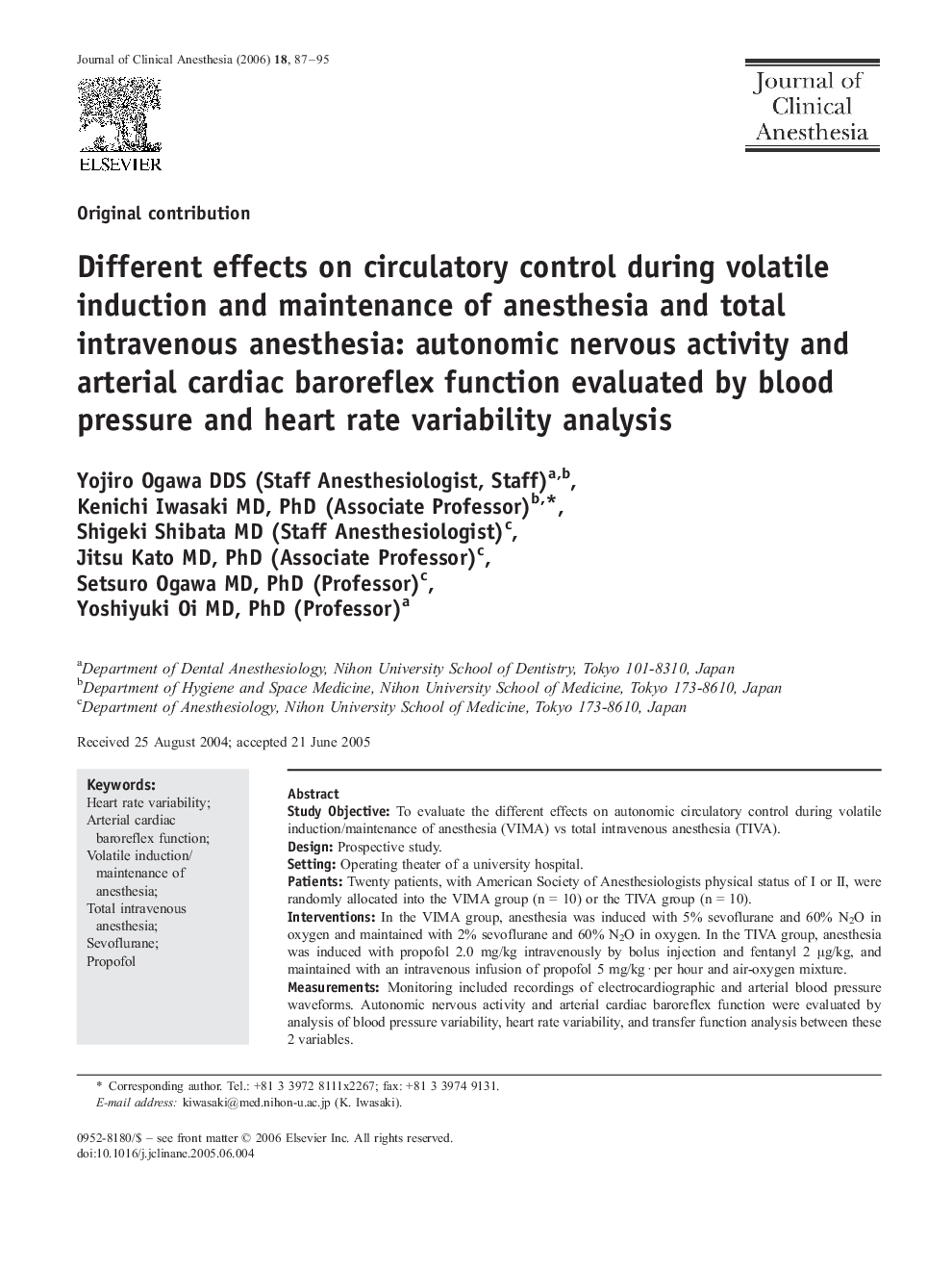| Article ID | Journal | Published Year | Pages | File Type |
|---|---|---|---|---|
| 2763992 | Journal of Clinical Anesthesia | 2006 | 9 Pages |
Study ObjectiveTo evaluate the different effects on autonomic circulatory control during volatile induction/maintenance of anesthesia (VIMA) vs total intravenous anesthesia (TIVA).DesignProspective study.SettingOperating theater of a university hospital.PatientsTwenty patients, with American Society of Anesthesiologists physical status of I or II, were randomly allocated into the VIMA group (n = 10) or the TIVA group (n = 10).InterventionsIn the VIMA group, anesthesia was induced with 5% sevoflurane and 60% N2O in oxygen and maintained with 2% sevoflurane and 60% N2O in oxygen. In the TIVA group, anesthesia was induced with propofol 2.0 mg/kg intravenously by bolus injection and fentanyl 2 μg/kg, and maintained with an intravenous infusion of propofol 5 mg/kg·per hour and air-oxygen mixture.MeasurementsMonitoring included recordings of electrocardiographic and arterial blood pressure waveforms. Autonomic nervous activity and arterial cardiac baroreflex function were evaluated by analysis of blood pressure variability, heart rate variability, and transfer function analysis between these 2 variables.Main ResultsIn the VIMA group, the low-frequency component of blood pressure variability (LFSBP) and low- and high-frequency components of the R-R interval variability (LFRR and HFRR) decreased significantly during anesthesia. In the TIVA group, LFSBP and LFRR decreased significantly. The degree of reduction in LFSBP was greater in the VIMA group than in the TIVA group. However, changes in R-R interval variability and cardiac baroreflex indices were not significantly different between the 2 groups.ConclusionsOur results demonstrated that although reductions in autonomic nervous modulation to the heart might not be so different between the 2 groups, reduction in sympathetic nervous modulation to peripheral vasculature is greater in the VIMA group than in the TIVA group.
